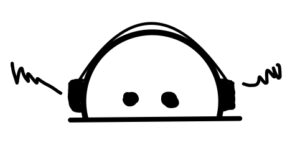Chapter 5 - Aural Logic
What is it that distinguishes Music from Noise? This website looks into such a broad range of music, from Coleman Hawkins and Charlie Parker to Eric Dolphy and Cecil Taylor. It will be worthwhile to agree on some basic concepts and terms.
Let’s begin with this beautiful and captivating recording of a busy marketplace.
“…Finally I said that the purpose of the purposeless music would be achieved if people learned to listen; that when they listened they might discover that they preferred the sounds of everyday life to the ones they would presently hear in the musical program; that that was alright as far as I was concerned.” John Cage
Aural Logic & Repetition
What distinguishes music from noise is comprehensibility. Sound becomes comprehensible when it contains some form of Aural Logic. The most important form of Aural Logic is repetition and recurrence. It’s what makes the marketplace recording so compelling.
‘Musical form in the narrow sense has ultimately only two basic aspects: Repetition and Recurrence.” Groves Dictionary of Music
Traceable Movement
Repetition creates Aural Logic but repetition can’t hold our attention indefinitely. Our minds will eventually want something to happen. Let’s say the ambient “rhythm of our marketplace” is interrupted with the sound of a police siren passing through. Everyone lifts their heads to see what’s going on. After it passes the familiar hum of the market is restored. This “Traceable Movement” of interruption and restoration creates interest.

Expectations
By combining Traceable Movement and Repetition we can create “Expectations“. These Expectations can be satisfied, solved, delayed, frustrated, thwarted or denied. Any of these can be interesting. And with all this comes the driving force of Jazz. Toying with expectations is what Jazz musicians do.
Collective Expectations
Individual pieces of music can create expectations about what will come next; but ‘types’ of music (genres) can create “historical expectations” that transfer from one piece of music to the next. Shared common experiences create a “collective memory” (history) which in turn creates a common language with its own set of “Collective Expectations“.
Satisfying these collective expectations will create agreement and satisfaction.

Toying with or challenging these expectations can create any number of reactions.

By repeating the same challenge to a set of collective expectations
the challenge can be normalized, collectively understood and collectively accepted.

The new model (paradigm) is now open to new challenges.

This cycle creates an evolution of collective experience or what we might call a “Living Language“. This collective evolution can be witnessed in the shift from “Classical Music” to “Romantic Music” to “20th Century Classical”. Or from “Swing” to “Bebop” to “Hard Bop” to “Modern Jazz”.
“… in a larger context, where a team, a company, a tribe, or people shares significant common experiences, a language inevitably comes into being that is, in depth, unintelligible to outsiders, even where it’s rational or pragmatic import may seem to be obvious and translatable.” Joseph Campbell
How Does THAT Work?!
When musicians are preparing a piece of music for interpretation or improvisation (Preparational Analysis) they will inevitably want to know how the piece “works”. But where does one begin?
First, it is important to realize that what makes a song work is subjective. Your personal and cultural history dictates how you hear a piece of music. Familiarity allows our expectations to evolve but our sense of Aural Logic will always be subjective.
Second, you should decide what you see as the dominant features of the composition. It can be a feature that involves Frequency (pitches, tones, melodies) and/or Rhythm (pattern, period, pulse) and/or Polyphony (intervals, chords, incidental layering) and/or Acoustics (timbre, texture, dynamics, noise).
There is little doubt most Westerners will hear “prominence” differently than a native audience when they hear an Indonesian Gamelan Orchestra or a West African drum ensemble. And that’s just fine! Diverse perspectives create new music.
Traceable Units
Once we decide what the dominant features are (repetition and traceable movement) we can start looking for “Traceable Units“. Traceable units are digestible passages. They might be phrases, motifs, cells, thoughts, sentences, riffs, figures, melodies, periods, sections…
What are these traceable units doing relative to expectations? Is the passage a question or an answer? Do you expect more (tension) or is it a resting place (resolution)?
Traceable Units tell us something about the structure, organization or form of a piece of music. To see what forms Jazz took during the period of intense evolution between 1945 and 1970 check out the page called ‘Changes’ (Link).
Preparational Listening
Before diving into a lead sheet or score it’s always useful to do a little analytical listening. Here’s a few steps you might consider:
(1) Polyphony – What types of Polyphony is at play – Supportive, Structured, Collective or Incidental? See below.
(2) Repetition & Recurrence – What is the basic form? 8, 12, 16, 32 bars? Are they repeated? Is there a B section? Are there phrases or motifs that recur.
(3) Traceable Movement & Expectations – Where are the points of rest and resolution? Are there places the composer does a “fake”, that is, going off in a different than you would expect? Are your expectations satisfied, delayed or denied?

Polyphony
Supportive: The accompaniment is primarily staying out of the way, laying down the beat and playing the changes.
Example: Louis Armstrong ‘West End Blues’ (YouTube Link)
Example: Chick Corea ‘Tones for Joan’s Bones’ (YouTube Link)
Structured: A number of voices are playing a prearranged counter-melody.
Example: Lee Konitz ‘Strutting With Some Barbecue’ (YouTube Link)
Example: Sam Rivers ‘Bursts’ (YouTube Link)
Collective: Some or all players improvise interconnected melodies within a prearranged structure.
Example: Bunk Johnson ‘Panama’ (YouTube Link)
Example: Jimmy Lyons ‘Jump Up’ (YouTube Link)
Incidental: The playing is primarily focused on some other form of sound construction. Rhythm or texture for instance.
‘Example: Art Blakey ‘Ya Ya’ (YouTube Link)
Example: Evan Parker ‘Titan Moon’ (YouTube Link)
